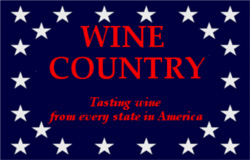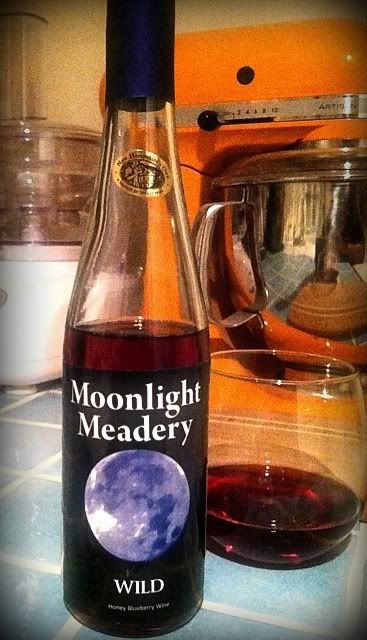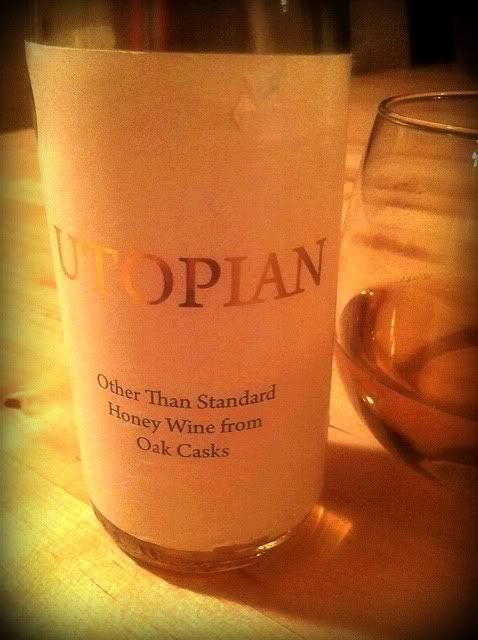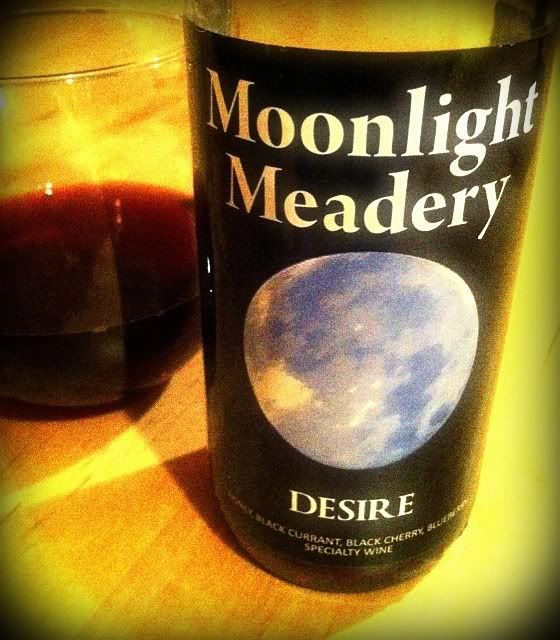 I went expecting nothing more than a smorgasbord of Spanish wines. I came away with a greater understanding of some grape varieties that had been a mystery to me, and a lesson on terroir, or in this case, terruño that surprised and informed me.
I went expecting nothing more than a smorgasbord of Spanish wines. I came away with a greater understanding of some grape varieties that had been a mystery to me, and a lesson on terroir, or in this case, terruño that surprised and informed me.
Great Match 2010 - Vivacious Varietals, Tantalizing Tastes - was held on May 12 in Los Angeles at The Bazaar/SLS by José Andrés. It's a big room for a big event. Just off to the left after entering the restaurant, the large space is elegant, with huge mirrors on both ends of the room. Twenty-three tables were arranged throughout to accommodate all the wineries and importers who were pouring. There were so many wines represented there, I didn't get a chance to sample at every table. Nevertheless, I stayed busy.
While I am a fan of Spanish wines - it was a Spanish wine tasting that initially piqued my interest in learning more about wine - I do not have an encyclopedic knowledge base on the subject. I was looking forward to a tasty learning experience, and that's what I got. I was able to experience wines from the Priorat region, grape varieties like Maturana, Bobal and Monastrell, an unbelievably intense dessert wine along with a Viognier that could have - and did - pass for a Sauvignon Blanc. It was a great afternoon.
Things I took away from this tasting:
1. The reds have lots of tannins.
2. The whites have a lot of grapefruit.
3. Albariño actually starts to get old after tasting about 20 of them.
Seriously, if you have never delved into the wines of Spain, you owe it to yourself to do so. The indigenous grapes of Spain are a wonder to taste, and even grapes you thought you knew can deliver a terruño-driven surprise.
I strolled up to one table where a gentleman was already tasting a white wine. "Smell this," he said, holding the glass right under my nose. I did, and unflinchingly said, "Sauvignon Blanc." I know my face must have registered shock when he replied, "Viognier." That Vallegarcía Viognier from Castilla was the wine of the day for me. But picking one for second place would be nearly impossible.
I should point out that the printed program for the event was not laid out well for note-takers. The font in the four-page foldout was tiny, the lines were single-spaced and there was not enough margin for proper note taking. I had to cobble together my information as best I could on the program while grabbing a brochure here, a business card there and a shelf talker wherever they were offered so I'd remember details. Mine was not the only complaint, either. Other tasters had similar gripes and the wine representatives didn't like it too much because it resulted in tasters scrunching down in their limited table space to scribble tiny little notes in between samples. I was told the show used to offer a more standard-sized book, and in my opinion they should go back to that format.
The following are my notes from Great Match 2010 Los Angeles. The wines in bold type were particular favorites of mine.
Bodegas Ramón Bilbao
Volteo Tempranillo 2007, VT de Castilla - luscious berries, very dry $10
Volteo Viura 2009, VT de Castilla - blend of Viura, Viognier and Sauvignon Blanc; subdued grapefruit with almond paste $10
Ramón Bilbao Tempranillo Crianza 2005, Rioja - juicy, fruity, young $13
Cruz de Alba Tempranillo 2006, Ribera del Duero - bright yet deep; intriguing minty characteristic $25
Classical Wines
Martinsancho Verdejo 2008, Rueda - huge grapefruit $20
Dehasa La Granja 2003, Castilla y León - cedar notes and an almost citrusy edge
*Casta Diva Cosecha Miel 2008, Alicante - powerful dessert wine; deep, rich, golden color; intense honey and apricots give way to 'flowers meet nuts' finish $19 half bottle
Collección Internacional del Vino
Antaño Tempranillo 2008, Rioja - very tannic $6
*Inspiracion Collección Varietales 2005, Rioja - vanilla on the nose, bright fruit on palate; muscular; 100% Maturana $50 (?)
Cuatro Rayas-El Verdejo de Rueda
Cuatro Rayas Viñedos Centenarios 2009, Rueda - 100+ year-old vines; concentrated grapefruit; very smooth and delicious $20
Cuatro Rayas Verdejo 2009, Rueda - refreshing and not too heavy on the grapefruit $18
Palacio de Vivero 2009, Ruea - Verdejo/Viura blend $12
*Vacceos Tempranillo Roble 2008, Rueda - nose really jumps out; bright and brambly taste with cedar notes $11
Dama del lago 2009, Rueda - deep, rich Tempranillo; brambly $10
Faustino/Campillo/Condesa de Leganza
Faustino V Blanco 2007, Rioja - a Verdejo with a delightfully funky nose and a nutty taste $12
*Campillo Gran Reserva 1994, Rioja - A very elegant Tempranillo; smooth yet forceful $50
Condesa de Leganza Crianza 2005, La Mancha - A rosado with wood spices $10
Condesa de Leganza Rosado 2008, La Mancha - a funky, dry Tempranillo rosado $9
Fine Estates From Spain
Botani 2009, Sierras de Málaga - a dry Muscatel with a very floral nose $19
Shaya 2009 Rueda - Verdejo with very slight grapefruit and other cutrus notes $15
La Cana 2009, Rias Baixas - floral/tropical Albariño $16
Volver 2008, La Mancha - Tempranillo with big blackberry flavor with a wonderfully smokey nose $16
*Tritón 2008, Castilla y León - a dark, powerful, brambly Tempranillo $20
Sierra Cantabria Crianza 2006, Rioja - Tempranillo with a slight nose and lush berries $19
Emilio Moro 2006, Ribera del Duero - amazing Tempranillo; loaded with spice notes; great grip $25
Folio Fine Wine Partners
Embruix 2006, Priorat - Garnacha/Cariñena with Syrah, Cabernet Sauvignon and Merlot; full-bodied, dark berries, coffee $25
Más de Leda 2007, Castilla y León - nice Tempranillo with a slightly minty aspect $20
*Sirsell 2006, Priorat - Garnacha, Cabernet Sauvignon, Merlot, Mazuelo and Syrah; very robust, earthy $30
Freixenet USA
Freixenet Cordón Negro Brut, Cava - toasty, yeasty, nutty $12
Marqués de Riscal/Vallegarcía
Marqués de Riscal Gran Reserva 2001, Rioja - Tempranillo with a spicy, sherry-like flavor $35
*Vallegarcía Viognier 2006, Castilla - quite a tangy nose, like Sauvignon Blanc, very nutty taste $40
Vallegarcía Syrah 2005, Castilla - very unusual spiciness $40
Martin Códax
Martin Códax Albariño 2008, Rias Baixas - beautiful, tropical nose with a soft, nutty taste $17
Martin Códax Tempranillo 2008, Rioja - some Garnacha; cedar notes on the nose; medium-full mouthfeel with lush berries $12
Pacific Estates
Mont Ferrant Gran Cuvée 2005 Brut, Cava - refreshing with yeasty, nutty flavors $16
Mont Ferrant Rosé Brut , Cava - 60/40 blend of Monastrell and Garnacha; nice strawberry flavors - $17
*Mont Ferrant Blanes Nature 2004 Brut Extra, Cava - huge nose; very yeasty and rich $19
Montal Collection Red Garnacha 2007, Castilla - very soft and delicious $13
*Montal Collection Red Monastrell 2008, Castilla - funky nose; dark and husky on the palate $13
Abadía de Acón Red Tempranillo Joven 2008, Ribera del Duero - stainless steel; bright nose, lean mouthfeel and taste $17
Pernod Ricard USA
Campo Viejo Crianza 2005, Rioja - very lovely nose; slight mintiness on the palate $10
Campo Viejo Gran Reserva 2005, Rioja - beautiful nose and a mouthful of rich, dark berries $20
Rias Baixas Albariño
Mar de Frades Albariño 2009, Rias Baixas - extremely aromatic; huge floral nose, pears on palate $25
Laxas Albariño 2009, Rias Baixas - floral notes with a nutty finish $18
*Brandal Barrica Albariño 2006, Rias Braixas - 6 months in oak really makes a huge difference; very nutty; a substantial wine $17
Secret Sherry Society
Barbadillo Solear Manzanilla, Manzanilla Sanlúcar de Barrameda - very dry; salty flavor; I can taste the ocean $10
González Byass Tio Pepe Fino Sherry, DO Jerez-Xéres-Sherry - slightly less dry; yeastier $17
UCI/Castelnoble
Castelnoble Shiraz 2009, Castilla - 100% steel; very bright and full of berries $8
Castelnoble Bobal Rosado 2009, Castilla - 100% Bobal; all steel 18 months; an offbeat strawberry taste $8
Castelnoble Sauvignon Blanc 2009, Castilla - all steel, tropical notes $8
Castelnoble Tinto Roble 2009, Castilla - fermented in steel, then 6 months French and America oak; tangy edge to a palate of currants and blackberries $10
Castelnoble Realce Crianza 2005, Manchuela - Tempranillo with spicy licorice tones $13
*Castelnoble Reserva 2003, Manchuela - 100% Bobal; bone dry and muscular; a fave; $15


 The mead he calls Wild is honey and blueberry wine made from unprocessed New Hampshire wildflower honey and mountain grown blueberries. It carries an alcohol level of 14.2% abv.
The mead he calls Wild is honey and blueberry wine made from unprocessed New Hampshire wildflower honey and mountain grown blueberries. It carries an alcohol level of 14.2% abv. Utopian is the strongest of the quartet I tried at 16.9% abv. It’s a semi-sweet, limited edition mead which is fermented and aged in Samuel Adams Utopias barrels.
Utopian is the strongest of the quartet I tried at 16.9% abv. It’s a semi-sweet, limited edition mead which is fermented and aged in Samuel Adams Utopias barrels. Desire is a beautiful deep ruby color. The nose again has a firm underpinning of honey aroma with a pretty straightforward display of the fruit used in making this melomel - black currant, black cherry and blueberry. The palate is dominated by the currant to the degree that it bears a striking similarity to cassis. It's not as viscous as Wild, but it definitely sits very full in the mouth. The 16.7% alcohol content means it's a fairly stiff drink, at least in the realm of wine. There's good acidity here, but I don't think I could bring myself to eat while savoring the texture and flavor of Desire. Well, maybe some chocolate. Desire beat out 352 other wines in a New England competition.
Desire is a beautiful deep ruby color. The nose again has a firm underpinning of honey aroma with a pretty straightforward display of the fruit used in making this melomel - black currant, black cherry and blueberry. The palate is dominated by the currant to the degree that it bears a striking similarity to cassis. It's not as viscous as Wild, but it definitely sits very full in the mouth. The 16.7% alcohol content means it's a fairly stiff drink, at least in the realm of wine. There's good acidity here, but I don't think I could bring myself to eat while savoring the texture and flavor of Desire. Well, maybe some chocolate. Desire beat out 352 other wines in a New England competition. The golden mead called Sensual shows a whole honeycomb full of honey aroma. That’s no surprise, since it is a traditional mead, made only from wildflower honey, water and yeast. The palate is dripping with honey, too. Once again, a resounding acidity is present and the finish is very long and ridiculously satisfying. The taste of pure honey is all that remains after a drink, and it’s there for quite a while. The alcohol level for Sensual is 15.3% abv. It's the simplest of the four featured here, but it may be my favorite.
The golden mead called Sensual shows a whole honeycomb full of honey aroma. That’s no surprise, since it is a traditional mead, made only from wildflower honey, water and yeast. The palate is dripping with honey, too. Once again, a resounding acidity is present and the finish is very long and ridiculously satisfying. The taste of pure honey is all that remains after a drink, and it’s there for quite a while. The alcohol level for Sensual is 15.3% abv. It's the simplest of the four featured here, but it may be my favorite.


 Maddalena Sauvignon Blanc, Paso Robles 2009 - served with glazed, marinated albacore salad with an avocado and ginger paste.
Maddalena Sauvignon Blanc, Paso Robles 2009 - served with glazed, marinated albacore salad with an avocado and ginger paste.



